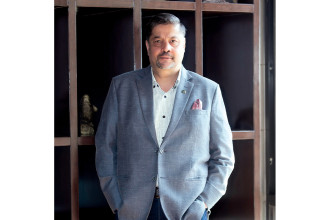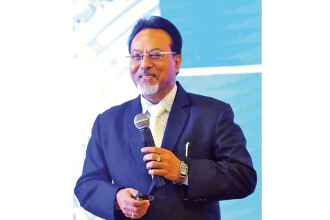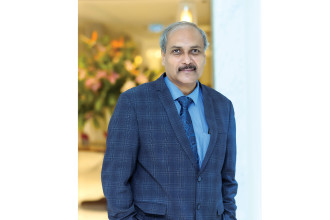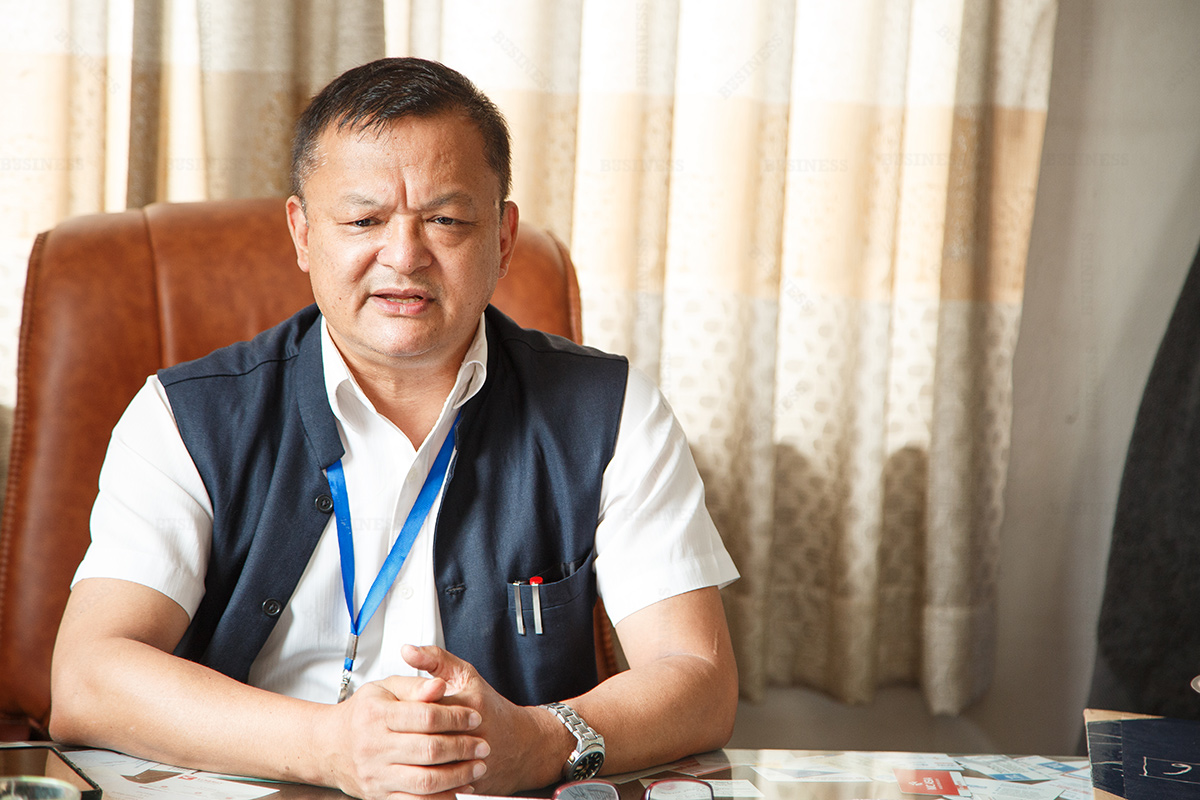
Dr. Sagar Kumar Rajbhandari is the Director of Sukraraj Tropical and Infectious Disease Hospital. Prior to his appointment, Dr. Rajbhandari served briefly as the Director of the National Tuberculosis Control Center.
Dr. Rajbhandari was born in Baglung and started his career as a health assistant in various rural health posts of the country. He later joined the Ministry of Health and rose through the ranks starting from the position of Medical Officer to Chief Consultant. Till date he has worked with 12 hospitals in Nepal.
In a conversation with Avant Shrestha of B360, Dr. Rajbhandari expresses his thoughts on the global pandemic and what lies in the immediate future for Nepal during the time of COVID19. Excerpts:
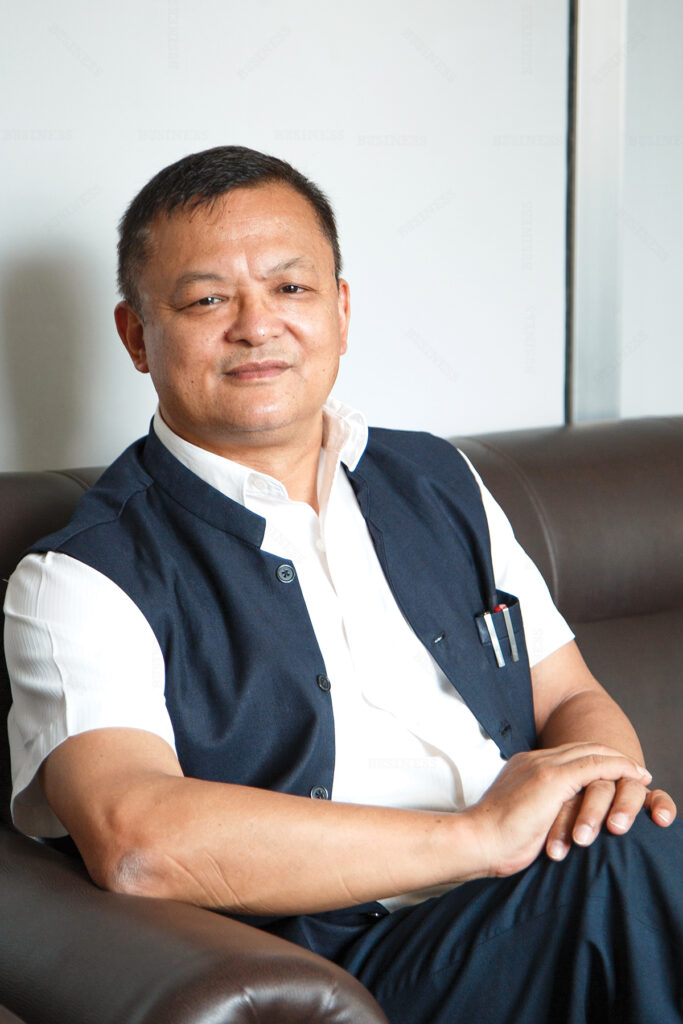
Could you tell us a little about the hospital and the protocol in place during the COVID 19 outbreak?
The protocols are well in place. But when you talk about this hospital which is about 84 years old, it is at present the only hospital in the country dedicated to the treatment of infectious diseases. It was initially established to fight the outbreak of cholera and after that the hospital started treatment of various diseases that have been vastly neglected in society like malaria, kalazar, tetanus, rabies, snake bite, dengue and leprosy among others. The treatment of these diseases is difficult. This hospital has been establishing preventive measures and battling such diseases. For a long time we have been a center for accident cases in the country and have been treating victims of accidents as well. Currently, after the outbreak of coronavirus and after it became a global pandemic, the government deemed that most hospitals in Nepal are not well-equipped to control the outbreak of a virus of this caliber nor can fully offer proper treatment for the victims of the diseases on mass scale. Thus the government decided to dedicate a hospital solely to battle the spread of COVID 19. We developed a plan and for the past five months, we have been transferring all our regular infectious diseases cases to other institutions, and have been providing services to cases only related to COVID 19. Through our protocol, we basically identify the infected or people who have caught the virus, screen them, and if necessary perform all sorts of tests on them, admit the infected and based on the severity of their symptoms place them in isolation or ICU and treat them accordingly.Why are there fewer cases in Nepal compared to other nations?
The fact that there are fewer cases in Nepal is not because our immunity power is stronger compared to citizens from other nations. Nor is it because of our speculated ‘special diet’. One of the factors for cases being lower than other countries is based on our behaviour. A simple example can be joining our hands in greeting rather than hugging and shaking hands; our culture obligates us to maintain a respectable distance even with family members. But the major factors I believe is that this is a novel infectious disease and most of the cases in Nepal are imported ones. Meaning most of the infectious cases in Nepal are found in people who have travelled from locations where there are huge number of coronavirus cases. 98% to 99% of the infections are seen in people who are coming back from aboard. Other cases maybe 1% to 2% that are seen in the country is due to close contact. Lastly, we have to understand that a virus starts to mutate in course of time. Basically this means that as it mutates, the strain in the virus tends to either become stronger or weaker. This is not conclusive but there are chances that the strain of the COVID 19 in Nepal may not be as strong as the one in other countries. That’s why the study on the virus’s genomic sequence is currently being conducted.
Since the government’s decision to ease the lockdown, your hospital has been overwhelmed with people seeking coronavirus tests. How are you managing this?
Well, instead of relying heavily on government support, we are a hospital with a long history and being the only hospital dedicated to combat various infectious diseases, we have to take responsibility at our end and manage the diseases by ourselves. To manage the current situation, we started mobilising our plans as soon as the pandemic started. We have been running our PCR machine and tests for the past two months. The PCR machine is capable of running around 300 tests at a time. For a long time, we have also been portrayed as a government hospital that is accessible to the financially restricted or as a hospital for the poor. We have established trust among people where they believe that we are fully capable to contain any sort of infectious diseases. Prior to when we had our own machine, we have been conducting regular checks, collecting swabs and admitting suspected cases in the hospital and conducting required examinations. It is important that people who have recently arrived from abroad and those who have returned to Kathmandu from their homes as the lockdown has eased and their places of employment resume operations visit the hospital for test. They are highly recommended to come here for test. Everyday there are about 700 to 1300 people who come to the hospital for checkups and we are managing the flow. Obviously to manage such a number during this time is daunting. To mitigate the danger of further infectious spread, we have developed a protocol where we check all visitors and those who have shown symptoms of the virus, those who have traveled from high-alert zone, or those who have been in recent contact with an infected person; we red tag them and they are sent for PCR testing. In addition, we send them to a quarantine facility and offer them counseling as well.Is the easing down of lockdown too early?
To be honest we cannot always be restricted by this pandemic. Obviously, it has hit several industries very hard, from travel to education to medical and to regular businesses. However, we have to understand that COVID 19 will not go away anytime soon; it will move ahead with us. We have to learn to live with this virus. Saying that, we have to be very vigilant about this virus and keep practicing precautionary measures as we try to resume life back to normality. It is important at this time that we follow all regulatory and preventative measures and move forward.Developed countries are in a race to test and find a vaccine for the virus, however it will take at least a year for Nepalis to have access to the coronavirus vaccine. Your thoughts.
Not only vaccine but we need medicines as well. But these are all currently being invented; these are not final. There is a catch though. If a vaccine is being invented in the US or other nations, after several trials and treatments and once the vaccine is proven to be effective, the vaccine will only be available in Nepal after six months. Let’s hope that we get the vaccine as soon as possible. Currently the most important matter, more than the vaccine, is that we have to understand that COVID 19 is within our community and we have to constantly take precautions and apply preventive measures in our daily lives.As the director of STIDH, what seems to be the future of this battle with COVID 19 for Nepal?
I have to speak as a health manager. The services we are providing here at the hospital, the other hospitals have to do it as well. You saw the crowd outside; we cannot do it alone. From test screening to swab collection to setting up quarantine facilities or even assisting in management, other hospitals have to follow suit. We have to increase the capacity of testing. As I have mentioned before, we have to test people who have shown silent symptoms, have traveled from abroad, and those who have been in contact with infected person. The cases will continue to increase so it is essential that we increase the capacity of our testing kits so that we can identify the infected, treat them properly and reduce the chance of the spread. Apart from PCR, there are various technological tests being applied such as antibody-based test which are being developed. And if we are able to bring those testing procedures in the country and increase the testing capacity, we can surely help mitigate the spread of the virus. Lastly, COVID 19 will be here for a long term, it will be difficult to address this in terms of the health sector alone. There are multiple stakeholders within the industry that have to take responsibility as well. To give you a simple example, the transport industry has to be vigilant and take precautionary measures by not overcrowding the buses, wearing proper PPE, disinfecting the buses after each trip. I understand that people have been frustrated because of the lockdown. I have noticed people not wearing masks in public places and people have been gathering outside in crowded areas and in restaurants as well. These are the signs of disaster waiting to happen. Our health workers have been working very hard for 8 to 12 hours every day and at times without being able to go to the toilet. The frontline health workers are putting their lives at risks. Their main motivation is to help reduce the cases of the virus as well as the cases of transmission. The same responsibility that are currently being taken by the health workers, every citizen should also take in helping control the spread of this virus by following safety measures strictly.How important is it for us to be vigilant about the second wave?
It is very important because this is a new viral disease. All countries experiencing the second wave are experiencing massive losses. In our attempt to stop the second wave from hitting Nepal and bringing the current cases to a controlled level we have to once again apply all required safety measures. From normal people taking responsibility to the higher ups in the government, everyone should take responsibility. From central government to provincial governments to local governments, it is an opportunity for all to be involved and united in the fight against this global pandemic.
Published Date: August 11, 2020, 12:00 am
Post Comment
E-Magazine
RELATED Face 2 Face



